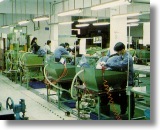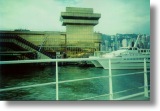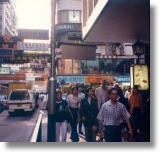



Frequently Asked Questions
- Why should I consider sourcing in Asia?
- Price
Labor and overhead costs are significantly lower in Asia than in the US.

- Quality
World Class quality is available from many low cost suppliers in Asia. Solid quality systems and management principals have almost nothing to do with the prevailing wages in a particular country. Especially in China, employers can be very selective and hire only the best workers. By contrast, here in the US, assembly line factory jobs are among the least desirable. US manufacturers often face turnover and morale problems at the lowest tier of their pay scale - on their assembly lines. Low worker satisfaction eventually leads to high internal quality costs, rejections, rework, and scrap. The Chinese manufacturer paying 1/10 the wage does not have these morale issues.

- Delivery and Lead Time
Top US mold, die, and tooling suppliers stay busy. Lead times for molds and dies is 16 to 26 weeks. The typical lead time in Asia is about 12 weeks.

- What about shipping and duty costs?
Air shipment from Asia to your door in the US costs roughly $2.50 per pound.
Duties range from 1% to 6% of the value added based on the supplier's invoice.
- What are manufacturing costs in Asia?
As a rule of thumb, you can expect to save about 25% on dies, molds, tooling. Assembly cost savings range from 50% and upward depending on the weight of your product.
- How do I decide if I should source in Asia?
How many hours of labor are there in a pound of your product? The higher this number is, the more you need to look into Asian manufacturing.
- Do I give up any patent rights if I manufacture overseas?
Your patent rights should not be affected by the location of your manufacturing. Consult a patent attorney for further info.
- Is my intellectual property safe if I manufacture in Asia?
The answer to this depends completely on your approach. An agent like Pacific Partners can assist you to source in a way that minimizes your risk.
You may have a competitor in Asia. If you do, the odds are that he would very much like to manufacture your product for you. If you take this approach, you are putting your intellectual property very much at risk.
On the other hand, the suppliers mentioned in this web site are very open about what business they are in and what they actively market. We endeavor to place your work with a supplier whose only interest is to be your supplier - that he does not market a product anything like yours and does not want to.
There are plenty of excellent suppliers who see their strength as their manufacturing and engineering and their weakness as sales and marketing. These suppliers are eager to be your OEM supplier and to do as much of your manufacturing as you will let them. But, they have no interest in becoming your competitor.
- I don't know how to do importing. Is that a problem?
You are probably best off working with an agent like Pacific Partners to work through all of this for you. You would then place your PO and the merchandise would be delivered to your dock.
- Are there risks?
You will be dealing with a new supplier. Approach him with due caution at first - just like you would a new supplier right down the street. Minimize the money you put at risk with the new supplier until they build a successful track record and earn your trust.
- Do the benefits outweigh the risks?
World class cost, quality, and delivery are available to your business from Asia. You can be assured your competitors are actively working to reduce cost. Your biggest risk is that they beat you to the draw with Asian suppliers.
The costs available in Asia are simply not available in the US. The long term benefits far exceed any initial risks.
- Is Asia politically stable enough to consider sourcing there?
3 years ago political tension was high between Taiwan and China. The US sent in 2 aircraft carriers with full flotillas. Through all the political tension, there was no disruption to foreign trade. Within the past year a US bomb hit the Chinese embassy in Kosovo. The political fallout continues over that incident. There is rhetoric from the Chinese government and the Chinese people are boycotting McDonalds and KFC in China in protest. But, once again, foreign trade continues uninterrupted. Hong Kong was handed over to China in 1997 - again there was no disruption to foreign trade. All of the governments involved place a high priority on the ongoing supply from Asia to the West.
- What are shipping times?
Air - 7 to 12 days
Sea - container - 4 to 6 weeks
Sea - less than container - 6 to 9 weeks
DHL, Fed Ex, USPS special air etc - about 3 business days.
- What is time difference?
Taiwan , Singapore, Hong Kong, Eastern China are all 12 hours ahead of Eastern Daylight Savings Time - 13 hours ahead of Eastern Standard Time.
- How do I deal with currency fluctuations?
Your quote should be in US dollars. An agent like Pacific Partners can advise you when currency fluctuations warrant recalculating the price.
- Do I need someone to do Asian Outsourcing for me?
Most of the manufacturers in the Fortune 200 believe so. They virtually all have International Purchasing Organizations (IPO) and experienced American manufacturing managers with proven track records living in Asia to look after their interests. These expatriates work directly with the suppliers and have first hand knowledge of their capabilities, their quality systems, how they treat their workers, etc. - and they work through problems with the suppliers as they arise.
- How does a company like Pacific Partners, LLC fit in this?
The cost that Fortune 200 companies incur with expatriates living in Asia and International Purchasing Organizations (IPO) is high. Small businesses could not afford this investment. Pacific Partners was founded by a former expatriate who has lived in Asia and worked with suppliers there for a Fortune 200 company. Pacific Partners acts as an IPO for small US businesses and absorbs all the costs of locating and working with the Asian suppliers and spreads this cost among its US base of customers.
- Why should I use a middleman like Pacific Partners instead of just outsourcing in Asia on my own?
Pacific Partners has the cross cultural knowledge to do business in Asia, an existing repertoire of reliable suppliers, and the means to add to this repertoire. In addition, Pacific Partners offers a cost effective approach to Asian sourcing. A typical US small business would spend more money and probably achieve a less desirable result sourcing in Asia on their own.
- If I let an agent like Pacific Partners set up everything for me and handle any problems as they come up, do I need to go to Asia myself?
For functional purposes - you would never actually need to go to Asia.
Many businesses consider it prudent to have first hand knowledge of their manufacturing. One of the services Pacific Partners offers is to escort established customers to visit their supplier(s) in Asia to accomplish this.
21. Cheap foreign labor is nothing new - this approach to manufacturing often presents its own set of new problems and usually the labor cost goes up quickly. Why is Asia different?
In the past, cheap labor was only available in countries with comparatively low populations and with little to offer but low wages. For example, when American businesses went to Mexico, Americans had to take the processes to the factories, train the workers, etc. Then, demand for workers quickly increased the wage rate.
By contrast, Asia has an unprecedented magnitude of cheap labor and offers a complete technical and management solution. A generation ago, the economies of Hong Kong, Taiwan, and Singapore were built on cheap labor. Their labor costs rose like other low wage areas - but as their labor costs were rising, these countries were educating their children and evolving their economies. They are now technology and financial centers and only a step (if that) behind the leading technological and economic powers of the world. The education level is high. (These are the Asians that are excelling in US colleges.) Salaries have reached an equilibrium at approximately ½ of US rates. So, these countries are a real bargain for first class engineering and business management. Businesses from these 3 former cheap labor countries have migrated many factories to China to continue their focus on low cost.
 China's population is 1.2 billion. This is 1/5 of the world's 6 billion population. There are more people unemployed in China than there are employed in the entire rest of the world. The shear size of this low cost work force is unprecedented. After 50 years of communism, China's economy is far behind the rest of the world. Both the previous and the current regimes in China have embraced a combination of free enterprise and technical education as the only solution to their economic plight. China is the same culture as Taiwan, Hong Kong, and Singapore and is modeling its economic future after them. Beneath all the political rhetoric to the contrary, China clearly welcomes businesses from these 3 countries to locate their factories in China. China benefits both by gaining jobs and by learning the business of free enterprise from businesses of these successful sister nations. This will be a long process and it will take China years of free enterprise to significantly raise the wage rates in this populous and impoverished nation.
China's population is 1.2 billion. This is 1/5 of the world's 6 billion population. There are more people unemployed in China than there are employed in the entire rest of the world. The shear size of this low cost work force is unprecedented. After 50 years of communism, China's economy is far behind the rest of the world. Both the previous and the current regimes in China have embraced a combination of free enterprise and technical education as the only solution to their economic plight. China is the same culture as Taiwan, Hong Kong, and Singapore and is modeling its economic future after them. Beneath all the political rhetoric to the contrary, China clearly welcomes businesses from these 3 countries to locate their factories in China. China benefits both by gaining jobs and by learning the business of free enterprise from businesses of these successful sister nations. This will be a long process and it will take China years of free enterprise to significantly raise the wage rates in this populous and impoverished nation.
Helpful Links
World Population as a village of 100 people
United Nations Estimate of the World's Population
Current population of the world
Currency conversion calculator
Time zone conversion calculator